More Coverage
Twitter Coverage
Satyaagrah
Written on
Satyaagrah
Written on
Satyaagrah
Written on
Satyaagrah
Written on
Satyaagrah
Written on
JOIN SATYAAGRAH SOCIAL MEDIA
The legend and a genius that was Jagadish Chandra Bose: Champion of East and West Who Almost Invented the Radio

Sir Jagadish Chandra Bose might not be a household name, but he really should be. Born in India during the period of British rule, he would become one of the most prominent Indian scientists of all time.
A pioneer in plant physiology, radio technology, and various other scientific fields, Bose would make many significant contributions to our modern understanding of the natural world. He would also help, in part, to inspire the formation of modern India.
Jagadish Chandra Bose (1858-1937) was much more than a scientific genius. While we know of his work on radio waves and on plant ‘communication’, it was the road to getting there that was just as remarkable.
His postulation that the line dividing the living and the non-living was artificially provoked outrage in the scientific community but Bose stayed true to his beliefs and used physics to demonstrate his hypothesis.
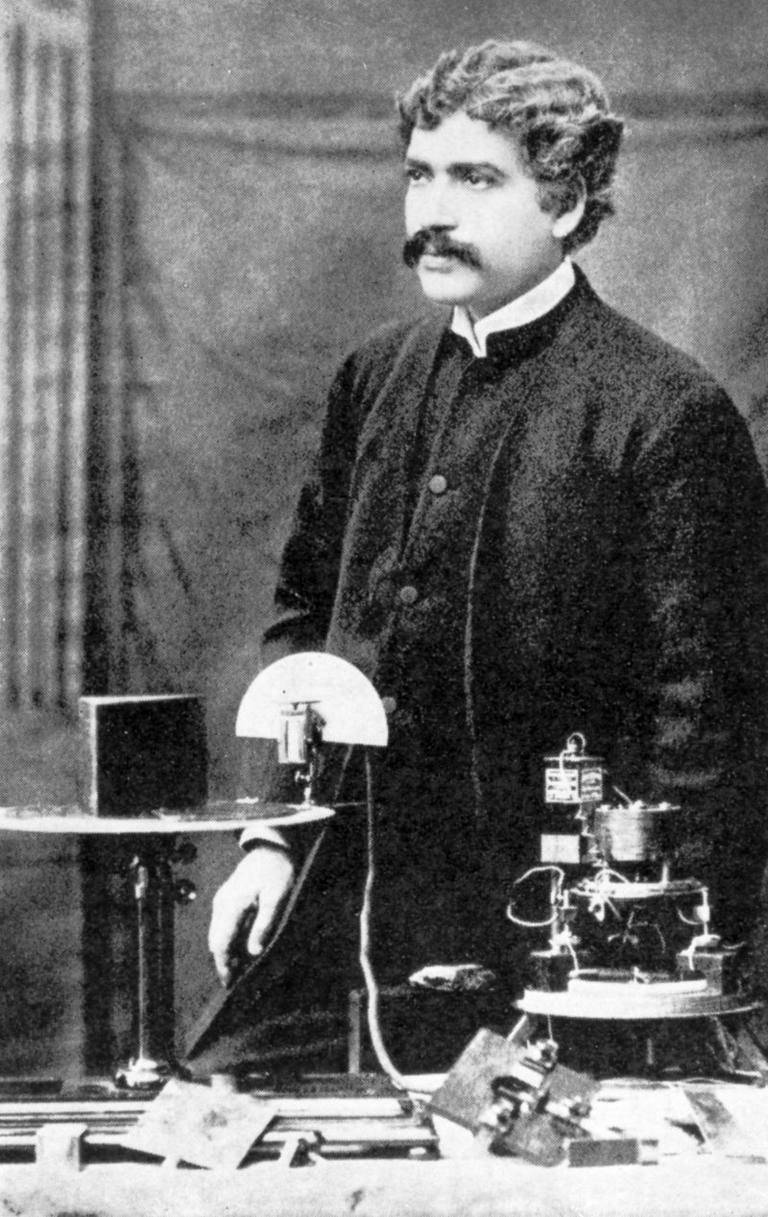 |
It was the eventual acknowledgement of the international scientific community, albeit grudging, that was Bose’s crowning achievement, for the recognition had been hard-fought. The sheer magnitude of his achievements is best understood in the context of the times he lived in.
Jagadish Chandra Bose's early days
J C Bose was born on 30th November 1858, only a few months after the Revolt of 1857-58 had been crushed and the subcontinent passed from the British East India Company to the British Crown. This was the heyday of the British Empire.
He was raised in Faridpur in Eastern Bengal, now Bangladesh, and studied in a vernacular school as his father wanted him to feel connected to his native language and his people. His house was a stone’s throw from a branch of the mighty Padma River, giving the lad easy access to nature, something that kindled his life-long interest in nature and the life sciences.
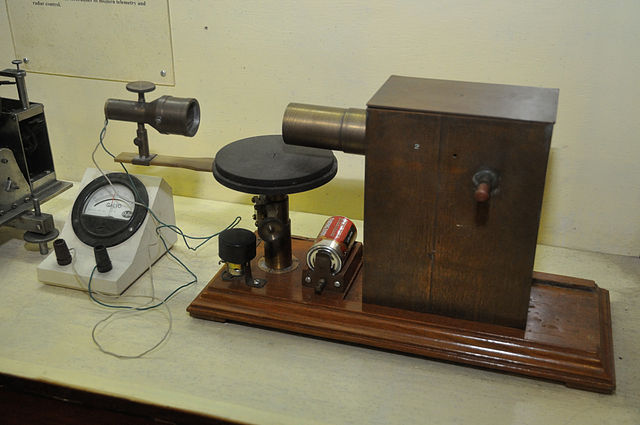 Bose's 60 GHz microwave apparatus at the Bose Institute, Kolkata. His receiver (left) used a galena crystal detector inside a horn antenna and galvanometer to detect microwaves. Bose invented the crystal radio detector, waveguide, horn antenna, and other apparatus used at microwave frequencies. | Wikimedia Commons |
Bose's father, Bhagawan Chandra Bose, was a civil servant and held prestigious positions of responsibility in the then-Bengal Presidency, a subdivision of the British Empire, and was active in Hindu reform movements. Sir Jagadish Chandra Bose could have had a very comfortable upbringing, with negligible contact with the problems that the rest of the country was facing in those times, under the colonial rule of the British.
However, his father chose to have him start his education at a vernacular school, as opposed to an expensive English-language school, where he would get a chance to learn his own language (Bangla) and to know and understand a wide variety of people. He was raised in a home committed to Indian traditions and culture. The impact of this early-life experience and contact with a range of different people stayed with Bose throughout his life and was clear in his attitude toward his work and life.
Speaking at the Bikrampur Conference in 1915, Bose said:
“At that time, sending children to English schools was an aristocratic status symbol. In the vernacular school, to which I was sent, the son of the Muslim attendant of my father sat on my right side, and the son of a fisherman sat on my left. They were my playmates. I listened spellbound to their stories of birds, animals, and aquatic creatures. Perhaps these stories created in my mind a keen interest in investigating the workings of Nature. When I returned home from school accompanied by my school fellows, my mother welcomed and fed all of us without discrimination. Although she was an orthodox old-fashioned lady, she never considered herself guilty of impiety by treating these ‘untouchables’ as her own children. It was because of my childhood friendship with them that I could never feel that there were ‘creatures’ who might be labeled 'low-caste'. I never realized that there existed a 'problem' common to the two communities, Hindus and Muslims.”
At the age of 11, Bose joined the Hare School, then the St. Xavier's School at Kolkata (then known as Calcutta), and finally he went on to St. Xavier's College in Kolkata. These institutions continue to be some of the most prestigious places to receive an education in India. He then received a bachelor's degree from the University of Calcutta in 1879. It was at St. Xavier's College that, Bose met Jesuit Father Eugene Lafont, who played a significant role in developing his interest in the natural sciences.
The other big influence was the Brahmo Samaj, a reformist society, of which his father was a follower.
Bose received a firm grounding in spiritual philosophy as a Brahmo and combined it with his scientific research, which was based in Western-style on observation and experiments.
Bose meets Eugène Lafont
Eugène Lafont was a Belgian priest, who became a missionary in India, where he went on to become a scientist, and also founded the Indian Association for the Cultivation of Science to increase the awareness of and interest in science.
Lafont was a research scholar and inventor, but most of all, an educator. He served in the Senate of the University of Calcutta for many years, and his Association served as the center of research for several noted scientists, including Nobel Laureate Sir Chandrasekhara Venkata Raman (CV Raman), and his protégé of sorts, Sir Kariamanickam Srinivasa Krishnan (KS Krishnan).
Lafont inspired in Bose a great interest in physics and natural sciences. Bose started out as his student but quickly grew to become friends with him.
After college, he travelled to England and obtained a natural sciences tripos from Christ College, Cambridge, on a scholarship. He earned an additional BSc degree from London University, which was so impressed with his research that it took the extraordinary step of conferring a doctorate on him without an examination.
But that honour was to come later. When Bose returned to India in 1884, he confronted many obstacles that thwarted the pursuit of scientific research. Despite recommendations from the highest academic quarters in England for an appointment in the education service, Bose had to struggle to get his due from the British in India, who were reluctant to encourage Indians for fear that it might ‘turn their head’.
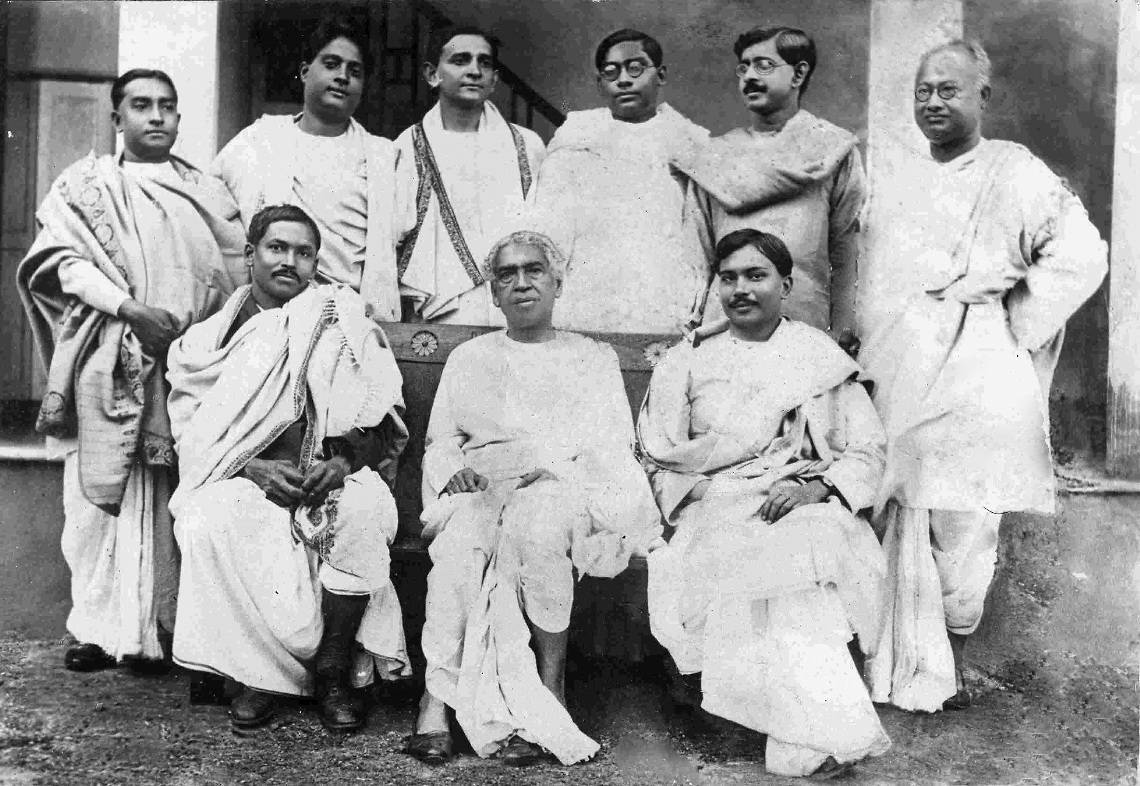 Jagadish Chandra Bose (seated, centre) with other prominent scientists from Calcutta University | Wikimedia Commons |
Beginnings of Research
After three years, Bose was appointed as a full-time professor of physics at Presidency College in Calcutta. His teaching position kept him very busy and it was not until the end of 1894 that he was able to turn to serious research, kicking off the most fruitful phase of his life as a scientist.
Patrick Geddes, botanist-turned-sociologist and town planner, and a contemporary of Bose, in a biography of the scientist, commented on Bose’s ingenuity and resourcefulness during this period: “Within three months of this resolve, with no laboratory to speak of and with the help of an untrained tinsmith, he was able to devise and construct new apparatus for his first research on some of the most difficult problems of electric radiation.” (An Indian Pioneer of Science: The Life and Work of Sir Jagadis C. Bose, 1920). The results of his research were far-reaching but Bose went way beyond, laying the foundations of scientific research by building institutions for that purpose.
Bose’s scientific research was unusual because it covered phenomena that are usually compartmentalised into mutually exclusive disciplines. He postulated the interconnectedness of the living and the non-living at a time when scientists and technologists looked at things in quite the opposite way.
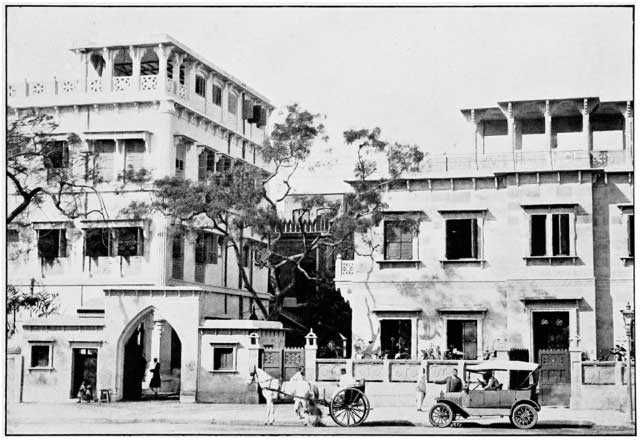 Photograph of Bose Institute from The Life and Work of Sir Jagadis C. Bose | Wikimedia Commons |
Bose's incredible work on radio technology and International Recognition
Working in a difficult socio-political environment and in the scarcity of equipment and funding, Sir Jagadish Chandra Bose continued to do pioneering work in several fields. To this end, he became the first person in the world to use semiconductor junctions for detecting radio signals.
It was his work in physics, however, that brought him into the spotlight for Bose had devised equipment that could not only produce electromagnetic waves but even allow the scientist to study their properties with accuracy. His findings were found worthy of publication by The Royal Society.
Yet, rather than trying to convert his inventions into commercial gains, he chose to make his inventions public, in the same way as open-source software works today, to enable anyone else to use and build on his research. Bose used to be quite strong against patenting his inventions, and barely ever expressed interest in commercial uses of his research, encouraging others to use his work.
He had resolved not to seek any personal advantage from his inventions and pursued science not only for itself but for its application to the benefit of mankind. Yet, giving in to peer pressure, he did apply for the patent for the first solid-state diode to receive electromagnetic waves.
He also carried out extensive studies on diffraction, refraction, and polarization, effectively inventing wireless telegraphy. Sir Jagadish Chandra Bose's research on radio waves led to him being able to create waves with very short wavelengths, all the way down to 5 mm. During the same time frame, Marconi was working on commercializing his findings in radio waves and trying to market it to the British Postal Service, while Bose continued his research in the pursuit of scientific interest.
This was no mean achievement as it was the culmination of the work of great scientists from Michael Faraday and James Clerk Maxwell to Heinrich Hertz. Electromagnetic radiations generated by Hertz had a wavelength of 66 centimetres (well over half-a-metre) and therefore difficult to study and handle. Bose succeeded in producing, for the first time, electromagnetic waves with much shorter wavelength – five millimetres – that were called millimetre waves and now known as microwaves.
He had developed the instruments to generate, manipulate and detect them. Before he appeared on the scene, each of those tasks was very difficult. He invented the ‘spiral spring coherer’ to receive these waves, and with its help, demonstrated at a public lecture in 1895 in Calcutta that these millimetre waves, longer than infra-red waves, could not only pass through space but also through walls.
Impressed with Bose’s demonstration of wireless communication, Sir Alfred Croft, Director of Public Instruction of Bengal, strongly recommended that the government sponsor Bose’s visit to England to enable him to deliver Friday Lectures at the Royal Institution, for which he had been invited. Later, in England, Bose demonstrated the working of the device developed by him, drawing praise from top scientists like Lord Kelvin and Sir J J Thomson.
Bose’s ‘coherer’ later played a crucial role in wireless communication, and was used by Guglielmo Marconi and Karl Ferdinand Braun to establish wireless or radio communication. They were awarded a Nobel Prize.
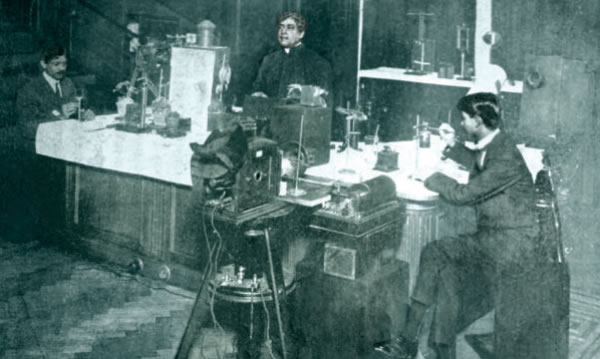 Source: Bose Institute |
Despite inventing this crucial part, Bose was left out in the cold as he had not patented his invention.
But his work did not go unnoticed. It forced a grudging acknowledgement of the value of the ‘Eastern mind’, with whose imagination and persistence it would be possible to “wring from nature some of her closely guarded secrets”. Thus went the conservative London weekly Spectator, which conceded that the Asiatic mind could be the “greatest addition ever made to the sum of the mental force of mankind”.
To his credit, Marconi did eventually acknowledge the importance of Bose’s work in his writing. Sir Jagadish Chandra Bose also developed equipment for transmitting, generating, and receiving radio waves. He experimented with galena to prepare an early type of semiconductor diode that can be used as an electromagnetic wave detector.
To satiate his myriad curiosities, he delved deep into multiple fields during his lifetime. He switched from the study of physics to the study of metals and afterward to plants. Another one of his inventions was an extremely sensitive coherer, a device to detect radio waves. He found that using the device over a long period of time, without any breaks, led to a loss in its sensitivity. This loss, however, could be reversed by leaving the "Coherer" unused for some time.
Bose also developed a device to demonstrate the effect of electromagnetic waves on non-living and living matter.
Sir Jagadish Chandra Bose authored two illustrious books: "Response in the Living and Non-living" (1902) and "The Nervous Mechanism of Plants" (1926).
The honors which the great Indian scientist received include Companion of the Order of the Indian Empire in 1903, Knighthood in 1917, Member of the Vienna Academy of Sciences in 1928, Member of Finnish Society of Sciences and Letters in 1929, Founding Fellow of the National Institute of Sciences of India (now renamed as the Indian National Science Academy), Companion of the Order of the Star of India in 1912, Fellow of the Royal Society in 1920, President of the 14th session of the Indian Science Congress in 1927, Member of the League of Nations' Committee for Intellectual Cooperation, etc.
Unchartered Territory
Bose’s research took him into uncharted areas of thought when he noticed interesting parallels in the way inorganic substances and living things responded to a particular stimulus. He discovered this while studying the impact of electromagnetic waves on various substances.
The apparent fatigue exhibited by receivers of electromagnetic waves and how this fatigue was removed after a period of rest set Bose thinking. It made him challenge the existence of the dividing line between living and non-living things, following a series of experiments in which he showed remarkable similarities in the response to a stimulus between animal muscles and materials like iron oxide and potassium.
He explained it in a lecture he delivered in August 1900 in Paris, saying, “It is difficult to draw a line and say, ‘here the physical phenomenon ends and the physiological begins,’ or ‘that is a phenomenon of dead matter, and this is a vital phenomenon peculiar to the living.’ These lines of demarcation would be quite arbitrary.”
His hypothesis earned the hostility of physiologists, who resented the invasion of what they considered their exclusive domain by an ‘intruder’ from physics. They tried to discredit him and belittled his work but this only strengthened his resolve to continue with his chosen field of research and prove that he was right.
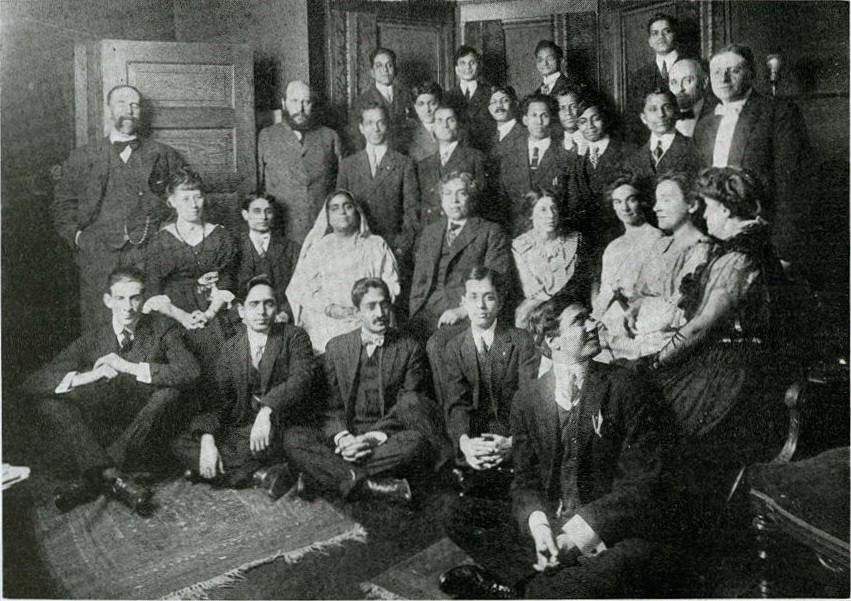 Photograph of Jagadish Chandra Bose at the home of Edwin Herbert Lewis in Chicago from the September 1915 issue of The Hindusthanee Student | Wikimedia Commons |
How Sir Jagadish Chandra Bose proved that plants are alive
Thanks to his work on radio waves, Boss began to think about the larger world of physics. He had been fascinated by the reactions seen in the mimosa (the touch-me-not plant, not the cocktail!), which, when touched or irritated, reacts by shriveling up of its leaves.
His curiosity about this little-understood mechanism compelled him to study the reactions of plans to stimuli. Through his work, he was able to establish the similarities between plants and animals with respect to response to external stimuli.
Bose's flagship contribution in this area was the invention of the machine called the "crescograph", which was a device for measuring growth in plants. There are two things in this instrument that help measure plant growth and development - a smoked glass plate and a number of clockwise gears.
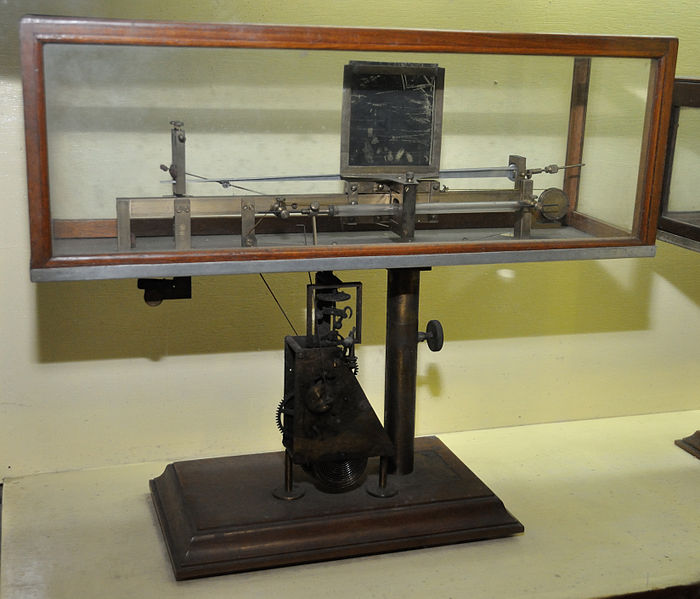 The "crescograph". Source: Biswarup Ganguly/Wikimedia Commons |
The plate is marked at regular distance intervals, and the clockwise gears are used to measure how growth is influenced, as well as how the plant moves under different conditions. The plate catches the reflection of the plant and is marked according to the movement of the plant. For measurement, the plant is dipped in bromide.
The device can take measurements of the order of 1/100,000th of an inch! Sir Jagadish Chandra Bose's first experiments were conducted with a leaf, a carrot, and a turnip plucked from his own garden.
This helped him to not only magnify by thousands of times the extremely slow and minute movements and growth of plants accurately but also record them in the form of curves on paper. Neither a pure physicist nor a pure physiologist could have done it. His work became the source of plant neurobiology, a field that has developed only in recent decades.
On the 10th of May 1901, the who's who of the scientific community all gathered at the central hall of the Royal Society in London. Everyone wanted to know how Bose would demonstrate that plants have "feelings" similar to other living beings (in the physical rather than emotional sense, obviously).
Bose chose a plant whose roots were cautiously dipped up to the stems in a vessel filled with bromide solution. He plugged in the "crescograph" with the plant and a lighted spot on a screen showing the movements of the plant. The spot began to move in a pendulum-like motion with the "pulse" of the plant. As the bromide began to act, within minutes, the spot began to vibrate violently and finally came to a stop, akin to an animal fighting poison.
The event was greeted with much appreciation however, some physiologists were not content, and considered Bose an outsider. They harshly knocked the experiment but Bose did not give up and was quite confident about his findings.
Using the "crescograph", he further researched the response of the plants to other stimuli such as fertilizers, light rays, and wireless waves. The instrument received widespread acclaim, particularly from the Path Congress of Science in 1900. Many physiologists also corroborated his findings, later on, using more advanced instruments.
Bose himself wrote: “All around us, the plants are communicating. We just don’t notice it.” His research was also instrumental in helping humans understand how to better care for plants, and also paved the way for enhanced research into crop cultivation and agricultural best practices.
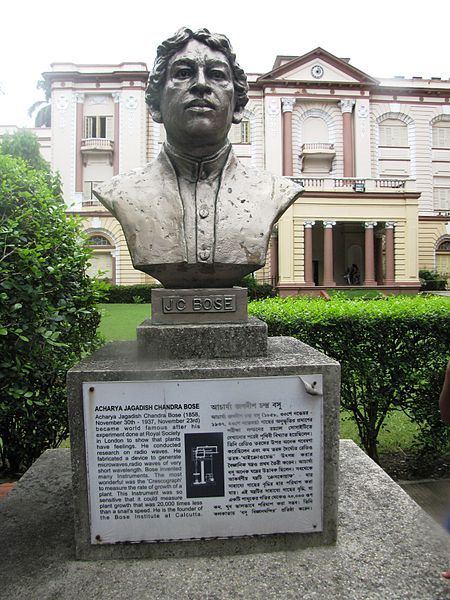 Source: AshLin/Wikimedia Commons |
He was also one of the first scientists to study the action of microwaves in plant tissues and the changes in the plant cell membrane potential, proving through this study that plants are sensitive to pain and affection.
To spread the knowledge from his learnings to the world, Bose described his experiments and their results in his 1902 publication, ”Responses in the Living and Non-Living”. Within the book, he described how plants appear to feel pleasure and pain.
Under the effect of stimuli like pleasant and gentle music, the speed of growth of plants increased and decreased when exposed to harsh or loud music. Similarly, plants that were spoken to, as one would with babies and pets, would be "happier" than others.
Although some of these conclusions later proved incorrect, it is now agreed that Sir Jagadish Chandra Bose had made very significant contributions to the fields of chronobiology and circadian rhythms, long before these terms were even coined.
Australian electrophysiologist Virginia Shepherd, the co-author of a 2008 biography of Bose (Remembering Sir J.C. Bose), has written that Bose regarded plants not as passive automata but as active explorers of the world. She asserts that in 1900 Bose had laid the foundations for a “phenomenology of plant mechano-perception, and delineated characteristics of excitation that are amongst the general corpus of plant electrophysiological lore… mechano-perception underlies many subtleties of plant behaviour.”
Bose’s contribution to science was not limited to his work. He not only challenged the dominant world scientific paradigm of his time but also the practice of commercialising knowledge through patents. He believed knowledge belonged to everyone, and so when he set up the Bose Institute in Calcutta, he stipulated that no patents were to be taken on works done at the institute. The institute continues to carry forward the legacy of this great man.
Bose becomes an Indian national hero, sort of
Sir Jagadish Chandra Bose's entire lifetime of 78 years took place during the British rule in India, a period that gave rise to prominent Indian reformers such as Gandhi. By comparison, Bose is a lesser-known legend, albeit equally as important for the development of post-British India.
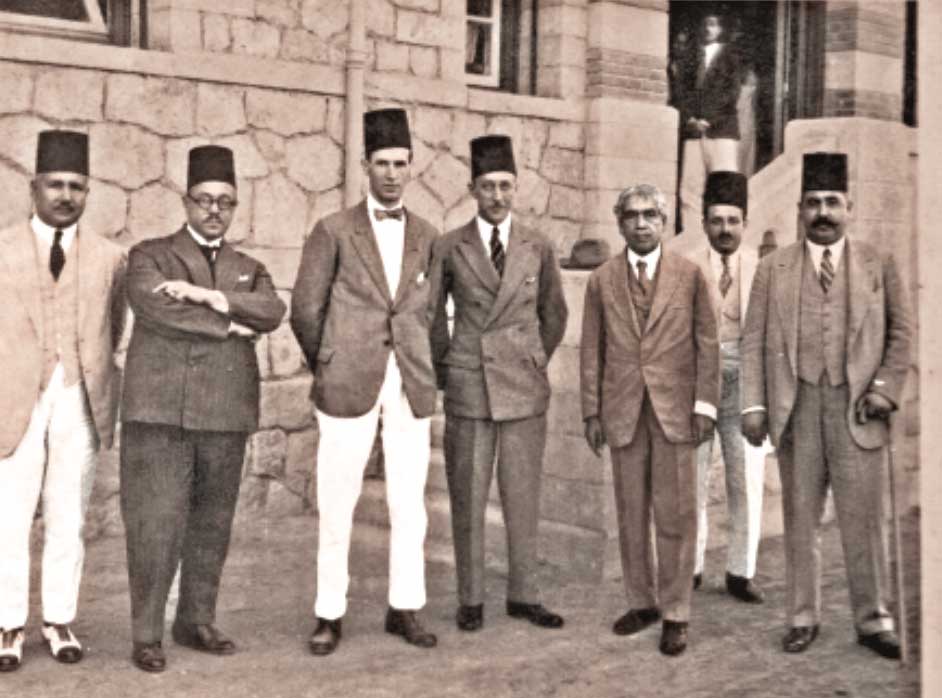 Sir JC Bose with Ministry of Agriculture officials at Royal Geographical Society of Egypt, Cairo (Sep. 1928) |
Bose was much more than all his accolades; he was a source of inspiration to a nation otherwise struggling for independence and fresh identity, in a difficult economic and political climate. The Better India writes about his impact on his close friend and Nobel Laureate Rabindranath Tagore. Tagore was a vocal supporter of Bose's research. In his poem for him, published in Kalpana, Tagore was magnanimous in his praise:
“From the Temple of Science in the West,
far across the Indus, oh, my friend,
you have brought the garland of victory,
decorated the humbled head of the poor Mother…
Today, the mother has sent blessings in words of tears,
of this unknown poet.
Amidst the great Scholars of the West, brother,
these words will reach only your ears.”
As Tagore’s words portray, Sir Jagadish Chandra Bose was not just a scientist, he was a symbol of national pride. Bose too had always acknowledged his responsibilities as a scientist to revive the national pride of his country. In a letter to Tagore, he wrote:
“I am alive with the life force of the mother Earth, I have prospered with the help of the love of my countrymen. For ages, the sacrificial fire of India’s enlightenment has been kept burning, millions of Indians are protecting it with their lives, a small spark of which has reached this country through me.”
Sir Jagadish Chandra Bose and his undying legacy
For a country going through an identity crisis, Sir Jagadish Chandra Bose was a source of immense national pride and hope. Prior to his death in 1937, he founded the Bose Institute at Calcutta, devoted primarily to the study of plants.
He was greatly helped in his ambitious and noble endeavor, both financially and otherwise, by Tagore. Today, this Institute also carries research on various other fields.
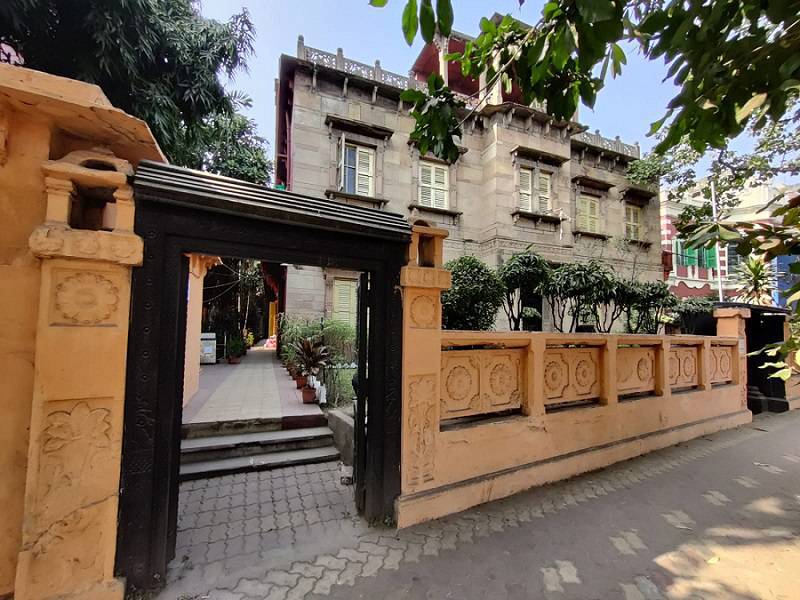 Bose Institute in present-day | Akshay Chavan |
In their own words:
"The Institute was set up with the purpose of investigating fully, 'the many and ever opening problems of the nascent science which includes both life and non-life'. Bose's early career included many marvelously inventive and pioneering experiments on electromagnetism which, in JJ Thomson's words, marked, 'the dawn of the revival in India, of interest in researches in the Physical Sciences', and on the commonality of the response of plants and inorganic materials to electric and mechanical stimuli."
To recognize his achievements in the field of wireless telecommunications, among other fields, an impact crater on the far side of the Moon is named after Bose. The Bose Crater has a reported diameter of 56 miles (91 km). Its outer rim has become worn and the edges rounded by impacts, although the shape of the site has been well-preserved.
Thanks to his pioneering work, Sir Jagadish Chandra Bose's legacy is certain to endure. Several scientists have repeated his work on plants using more sophisticated equipment and methods. At the same time, scientists are also trying to unravel the mystery of the molecular-level changes that happen within plants which give rise to the different reactions to different stimuli, such as light, touch, and sound.
Sir Jagadish Chandra Bose will continue to hold a unique place in the history of modern science.
References:
interestingengineering.com - By Christopher McFadden
famousscientists.org
AsianAgri-History Vol. 13, No. 4, 2009 (315-319) - Jagadish Chandra Bose: The First lndian Biophysicist - Arunima Chaudhuri and Amitabha Chattopadhyay
 Support Us
Support Us
Satyagraha was born from the heart of our land, with an undying aim to unveil the true essence of Bharat. It seeks to illuminate the hidden tales of our valiant freedom fighters and the rich chronicles that haven't yet sung their complete melody in the mainstream.
While platforms like NDTV and 'The Wire' effortlessly garner funds under the banner of safeguarding democracy, we at Satyagraha walk a different path. Our strength and resonance come from you. In this journey to weave a stronger Bharat, every little contribution amplifies our voice. Let's come together, contribute as you can, and champion the true spirit of our nation.
 |  |  |
| ICICI Bank of Satyaagrah | Razorpay Bank of Satyaagrah | PayPal Bank of Satyaagrah - For International Payments |
If all above doesn't work, then try the LINK below:
Please share the article on other platforms
DISCLAIMER: The author is solely responsible for the views expressed in this article. The author carries the responsibility for citing and/or licensing of images utilized within the text. The website also frequently uses non-commercial images for representational purposes only in line with the article. We are not responsible for the authenticity of such images. If some images have a copyright issue, we request the person/entity to contact us at This email address is being protected from spambots. You need JavaScript enabled to view it. and we will take the necessary actions to resolve the issue.
Related Articles
- ISRO mum on 684 staff dead: 197 suicides and 1,733 deaths at India's nuclear establishments in last 15 yrs
- "I had a calling to become what I became - I was created to do this": Srinivasa Ramanujan, mathematical genius who knew infinity credited his all formulae to visions of Mahalakshmi, "An equation for me has no meaning, unless it expresses a thought of God"
- Ten most compelling evidence of Extraterrestrial existence from 2020
- An Artisan Heritage Crafts Village: Indigenous Sustainability of Raghurajpur
- Santi Ghosh and Suniti Choudhury: Two Teenage Freedom Fighters Assassinated British Magistrate
- Valiant Marathas and the far-reaching effects of the loss of 3rd battle of Panipat: Jihad of the temple destruction
- The Balliol college at the University of Oxford has dedicated a new building after Dr. Lakshman Sarup, the first candidate at Oxford to pass his thesis for a Doctorate of Philosophy (DPhil) degree on Sanskrit treatise on etymology
- "Sanskrit is the language of philosophy, science, and religion": A Neuroscientist, James Hartzell explored the "Sanskrit Effect" and MRI scans proved that memorizing ancient mantras increases the size of brain regions associated with cognitive function
- "Research is creating new knowledge, without which there is no progress": National Research Foundation - a visionary initiative by the Indian govt aimed at centralizing funding for scientific & academic research with an ambitious target of ₹50,000 crore
- Unsung Heroine Pritilata Waddedar, Who Shook The British Raj at the age of 21
- Jhalkaribai: The Indian Rebellion Of 1857 Who Took on British Forces Disguised as Laxmibai
- Legend of Maharishi Charaka also known as The father of Ayurveda: Earliest school of medicine known to mankind is Ayurveda
- ISRO successfully tested the Gaganyaan Service Module Propulsion System (SMPS) on July 19, 2023 at ISRO Propulsion Complex (IPRC) , Mahendragiri
- "If art is to have a special train, the critic must keep some seats reserved on it": In a momentous event, PM Narendra Modi flagged off Puri-Howrah Vande Bharat Express in Odisha, marking a significant milestone in India's railway infrastructure evolution
- Operation Trident,1971: How Indian Navy Pulled Off One Of Its Greatest Victories over Pakistan, Karachi burned for seven days




























